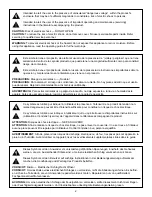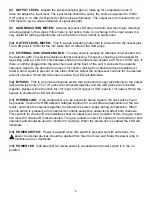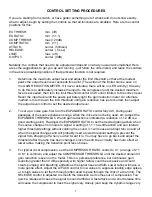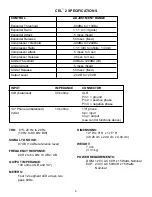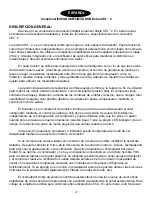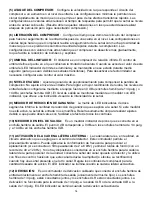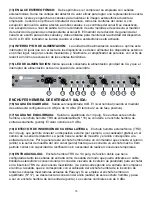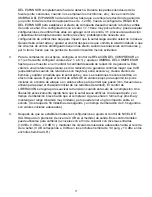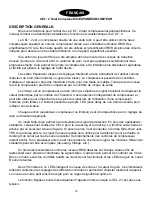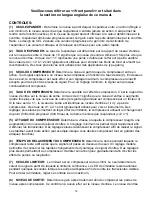
CONTROL FUNCTIONS:
(1) EXPANDER THRESHOLD: Sets the level at which the downward expander begins operation.
(If it is set at the minimum position, the threshold is so low that the expander never activates, effec-
tively disabling it.) If the input signal drops below the threshold’s set point, the expander fades it out
according to the slope (ratio) set by the expander RATIO control. The soft knee design smoothes the
transition from off to active by dynamically shifting the slope through the transition point. The attack
and release times are preset for fast action.
(2) EXPANDER RATIO: The expander ratio is determined by dividing the input level by the output
level. A ratio of 1:3 signifies that the output level has dropped three times as fast as the input. A ratio
of 1:1.1 has such a slight slope that it is barely audible. Ratios of 1:1.2 to 1:2 are typically used to
eliminate background noise and to dampen room reverberations. Higher ratios are used when gating
is required.
(3) COMPRESSOR THRESHOLD: Sets the point that compression action begins. Any signal
above this threshold will be compressed at the amount set by the compressor ratio control. If it
drops below this point, the compressor has no effect. At the maximum setting, the compressor will
be out of circuit for all signals except very high peaks. At the minimum setting, the source will be
almost continuously compressed.
(4) COMPRESSOR RATIO: Varies the amount of compression. It is the ratio of the input level to
the output level. A ratio of 4:1 signifies that the input level has increased four times as fast as the
output (the dynamic range is compressed by a factor of four). If the ratio is 1:1 the output exactly
tracks the input, and there is no compression. Ratios of 2:1 to 4:1 are typically used for vocals and
musical instruments. Higher ratios provide a soft limiting function, since the compressor uses the
same soft knee design as is used in the expander (see #1).
(5) COMPRESSOR ATTACK: Sets the speed at which the compressor circuit responds to an
increase in the input level. Minimum settings allow it to act quickly so that fast transients do not get
through. High settings slow down the response time to let the signal settle before acting upon it.
(Useful for those situations when you want percussive attacks, but still need compression.)
(6) COMPRESSOR RELEASE: Sets the time which the compressor circuit takes to track the input
after a drop in level. Low settings will cause the compressor to follow the signal closely, so that rapid
input changes will not be lost during compression. Higher settings will cause the compressor to
disengage more gradually, which helps reduce pumping and breathing.
(7) LIMITER THRESHOLD: The limiter is an infinite ratio compressor. The threshold control
defines the point that absolute limiting begins. The limit LED will light and hold for half a second (to
make transients visible) when this threshold has been exceeded. To disable limiting, set this control
to maximum.
4
FRONT PANEL
3
4
5
6
7
13
1
2
3
4
5
6
7
14
8
8
9
2
10
10
9
11 12
12
15
11
1
Содержание CEL-2
Страница 1: ...O W N E R S M A N U A L CEL 2 2 Channel Compressor Expander Limiter...
Страница 28: ...28 NOTES...
Страница 29: ...29 NOTES...


